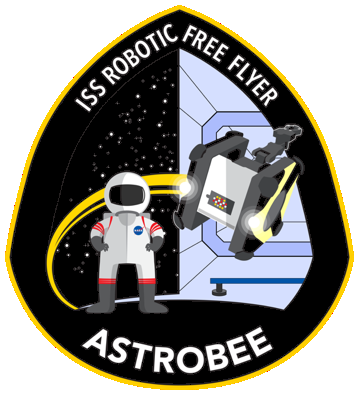 |
NASA Astrobee Robot Software
0.19.1
Flight software for the Astrobee robots operating inside the International Space Station.
|
 |
NASA Astrobee Robot Software
0.19.1
Flight software for the Astrobee robots operating inside the International Space Station.
|
Make sure your system is up-to-date and:
sudo apt-get install build-essential git
At this point you need to decide where you'd like to put the source code (ASTROBEE_WS) on your machine:
export ASTROBEE_WS=$HOME/astrobee
First, clone the flight software repository and media:
git clone https://github.com/nasa/astrobee.git $ASTROBEE_WS/src pushd $ASTROBEE_WS/src git submodule update --init --depth 1 description/media popd
If you are planning to work with guest science code, you will also need the astrobee_android repository. You should checkout the repository as a submodule:
git submodule update --init --depth 1 submodules/android
Next, install all required dependencies:
Note: root access is necessary to install the compiled debian packages below
Note: Before running this please ensure that your system is completely updated by running 'sudo apt-get update' and then 'sudo apt-get upgrade'
pushd $ASTROBEE_WS cd src/scripts/setup ./add_ros_repository.sh sudo apt-get update cd debians ./build_install_debians.sh cd ../ ./install_desktop_packages.sh sudo rosdep init rosdep update popd
Important: you can safely ignore the following error messages, as they are simply letting you know that certain libraries cannot be found. These libraries are for internal NASA use only, and are not required by public users provided that software is launched with DDS disabled.
E: Unable to locate package libroyale1 E: Unable to locate package rti E: Unable to locate package libmiro0 E: Unable to locate package libsoracore1 E: Unable to locate package libroyale-dev E: Unable to locate package rti-dev E: Unable to locate package libsoracore-dev E: Unable to locate package libmiro-dev
When compiling, the $WORKSPACE_PATH defines where the devel, build, logs and install directories are created. If you want to customize the install path then the $INSTALL_PATH can be defined. By default, the configure script uses the following paths:
$ASTROBEE_WS/build$ASTROBEE_WS/installIf you are satisfied with these paths, you can invoke the configure.sh without the -p and -w options. For the simplicity of the instructions below, we assume that $WORKSPACE_PATH and $INSTALL_PATH contain the location of the build and install path. For example:
export WORKSPACE_PATH=$ASTROBEE_WS export INSTALL_PATH=$ASTROBEE_WS/install
The configure script prepares your build directory for compiling the code. Note that configure.sh is simply a wrapper around CMake that provides an easy way of turning on and off options. To see which options are supported, simply run configure.sh -h.
pushd $ASTROBEE_WS ./src/scripts/configure.sh -l -F -D source ~/.bashrc popd
If you run a Zsh session, then
pushd $ASTROBEE_WS ./src/scripts/configure.sh -l -F -D source ~/.zshrc popd
The configure script modifies your .bashrc/.zshrc to source setup.bash/setup.zsh for the current ROS distribution and to set CMAKE_PREFIX_PATH. It is suggested to examine it and see if all changes were made correctly.
If you want to explicitly specify the workspace and install directories, use instead:
./src/scripts/configure.sh -l -F -D -p $INSTALL_PATH -w $WORKSPACE_PATH
Note: If a workspace is specified but not an explicit install directory, install location will be $WORKSPACE_PATH/install.
Note: Make sure you use the -F and -D flags. If these flags are not used, the code will not compile. The -F flag is used to turn off building the Picoflex. This is only needed for running on the robot and is not needed for the simulator. The -D is used to turn off building the dds bridge. The bridge is used to communicate with our ground data system and is also not needed for the simulator.
To build, run catkin build in the $WORKSPACE_PATH. Note that depending on your host machine, this might take in the order of tens of minutes to complete the first time round. Future builds will be faster, as only changes to the code are rebuilt, and not the entire code base.
pushd $ASTROBEE_WS catkin build popd
Note: In low-memory systems, it is common to run out of memory while trying to compile ARS, which triggers a compilation error mentioning "arm-linux-gnueabihf-g++: internal compiler error: Killed (program cc1plus)". A contributing factor is that catkin build by default runs multiple jobs in parallel based on the number of cores available in your environment, and all of these jobs draw on the same memory resources. If you run into this compile error, try compiling again with the -j1 option to restrict catkin to running one job at a time.
For more information on running the simulator and moving the robot, please see the Running the Astrobee Simulator.
Please contact your Astrobee point of contact if you need to cross compile the code.
For more information on running the simulator and moving the robot, please see the Simulation.